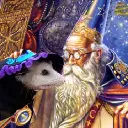what other subreddits are still closed?
 lefty7283 @ lefty7283 @lemmy.world Posts 41Comments 108Joined 2 yr. ago
lefty7283 @ lefty7283 @lemmy.world Posts 41Comments 108Joined 2 yr. ago

lefty7283 @ lefty7283 @lemmy.world
Posts
41
Comments
108
Joined
2 yr. ago
Deleted
Permanently Deleted
!astrophotography@lemmy.world